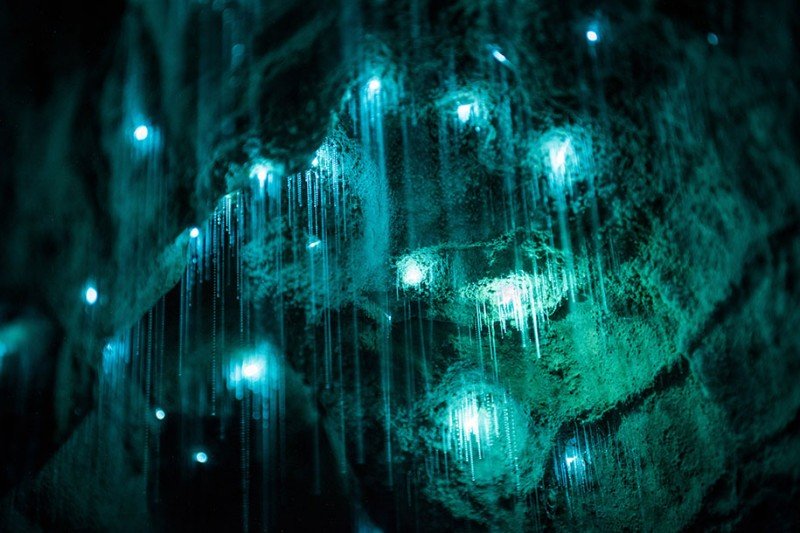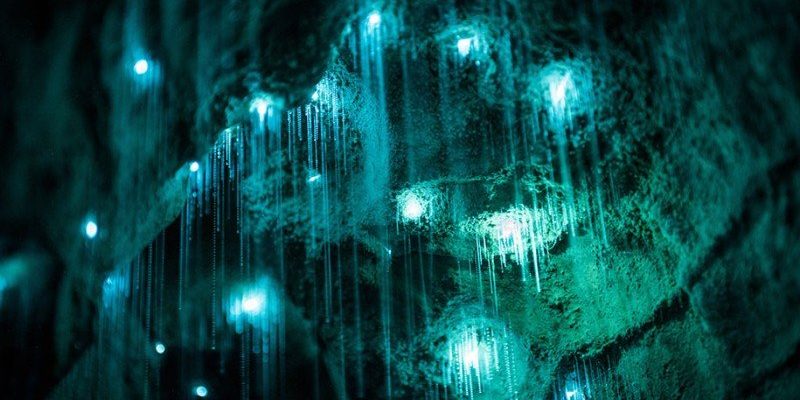
Limestone caves, with their distinct formations, and sandstone caves, soft and often more fragile, provide very different homes for these fascinating creatures. Each environment offers unique conditions that affect everything from the glow worm’s life cycle to the way they interact with their surroundings. So, let’s dive into the world of glow worms and explore how limestone and sandstone caves stack up against each other.
What Are Glow Worms?
Glow worms aren’t worms at all; they’re actually the larvae of certain species of flies, particularly from the family Lampyridae. These little glow-in-the-dark beauties have a remarkable way of attracting food. They emit a bluish-green light that both captivates and ensnares unsuspecting insects. What’s amazing is that this glow comes from a chemical reaction in their bodies, making it a fascinating display of nature’s ingenuity.
You might be wondering why glow worms glow in the first place. In the wild, their bioluminescence helps them catch prey. Imagine a tiny stick of neon light, flickering in the dark, luring moths and other insects right into their sticky silk traps. This unique method of feeding is crucial for their survival and growth into adult flies.
In essence, glow worms act as a natural pest control system in their ecosystem. Their glow not only enchants visitors but also plays an important role in maintaining balance within the cave’s environment.
The Characteristics of Limestone Caves
Limestone caves are formed primarily through the process of chemical weathering. Over thousands of years, slightly acidic water seeps through cracks in limestone rock, gradually dissolving it. This process leads to the creation of impressive stalactites, stalagmites, and other formations. These caves often feature beautiful, intricate structures that attract both adventurers and researchers alike.
The cool, humid conditions found in limestone caves are generally perfect for glow worms. The moisture in the air and the stable temperature create a favorable environment for their survival. Additionally, limestone caves often have magnificent entrances that allow light to pierce in at certain times of the day. This light can create a special ambiance, enhancing the glow produced by the worms.
Limestone caves also tend to have a more stable ecosystem. The intricate formations offer various microhabitats, making them a popular haven for numerous life forms, including the glow worms. So, if you’re planning to see glow worms, a limestone cave is a fantastic choice!
Exploring Sandstone Caves
On the flip side, we have sandstone caves. Sandstone is a much softer rock, formed from grains of sand that have compacted over time. Unlike limestone caves, which are often grand and intricate, sandstone caves might be more rugged and simplistic in their structure. This difference in formation means they tend to have fewer stalactites and other features commonly found in limestone caves.
Because sandstone is more porous, it allows water to flow through it more freely. This characteristic can lead to more variable humidity levels, making it a less predictable habitat for glow worms. While some sandstone caves do host glow worms, they often find it harder to thrive compared to their limestone counterparts.
Plus, the entrance of sandstone caves can be more limited, meaning less ambient light. This impacts the glow worms’ ability to attract prey and thrive. However, many visitors appreciate the unique features of sandstone caves, including the stunning colors and textures of the stone.
Comparing Habitats: Limestone vs. Sandstone
When comparing limestone and sandstone caves, it’s clear that their different characteristics influence the habitats available for glow worms. Here’s how they stack up:
- Moisture Levels: Limestone caves typically maintain consistent humidity levels, ideal for glow worms. In contrast, sandstone caves can have fluctuating moisture, which might stress these delicate creatures.
- Temperature Stability: Limestone caves often have cooler and more stable temperatures, while sandstone caves can experience varying temperatures, affecting glow worm survival.
- Structure and Formations: Limestone caves are often grander and have more intricate structures. These formations can create diverse ecosystems, supporting a greater number of glow worms.
- Light Penetration: Limestone caves usually allow light to seep in, creating an enchanting backdrop for glow worms to shine. Sandstone caves may not offer this benefit as effectively.
It’s fascinating how these two types of caves provide different environments for glow worms. Each has its own charm and character, influencing the life and behavior of these luminous larvae.
Why Does It Matter? The Role of Glow Worms
You might be thinking, “Why should I care about the differences between limestone and sandstone caves?” Well, understanding these environments helps us appreciate the intricacies of nature and the delicate balance within ecosystems. Glow worms serve as indicators of a healthy cave ecosystem. Their presence often means that the cave is thriving, with clean air and stable humidity levels.
Furthermore, protecting these ecosystems and the glow worms that inhabit them is essential for maintaining biodiversity. With many natural spaces under threat from human activities, knowing the best habitats for glow worms can guide conservation efforts. Limestone caves, for instance, might be prime targets for preservation due to their richness in biodiversity.
In short, glow worms aren’t just cute little lights in a cave; they play a significant role in their ecosystems. Protecting their habitats helps ensure the continued health of these unique environments.
Visiting Glow Worm Caves: Tips and Considerations
If you’re itching to see glow worms in action, planning your visit wisely is essential. Here are some quick tips to maximize your experience:
- Research Locations: Look for caves that are known for their glow worm populations, like the Waitomo Caves in New Zealand, a famous limestone cave system.
- Best Times to Visit: Evening is usually the best time to see glow worms glowing. They tend to be more active in the darkness, so plan accordingly!
- Respect Nature: Always follow guidelines and rules when visiting caves. Flash photography can disturb glow worms, so be mindful of your surroundings.
- Guided Tours: Joining a guided tour can offer a wealth of knowledge and insight, enhancing your understanding of the cave environment.
By being considerate and knowledgeable during your visit, you can enjoy the magic of glow worms while helping to protect their delicate habitats.
Whether it’s the enchanting glow of limestone caves or the rugged charm of sandstone caves, both places offer unique experiences with glow worms. By understanding the differences between the two, we can appreciate the delicate balance of nature and the role these tiny creatures play in their ecosystems. So, next time you think about venturing into a cave, consider the type of rock and the fascinating glow worms that might be waiting for you. Both limestone and sandstone caves have their own stories to tell—illuminated by the glow of these captivating larvae.

